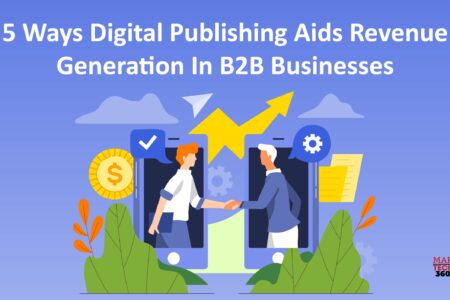Here’s a cool fact: Over 80% of folks in the US get their news from digital gadgets!
So, digital publications are all the rage these days, and they’ve got some sweet perks. They’re easy on your wallet, and you can read them whenever you feel like it.
But, what exactly is digital publishing? Well, keep reading to find out more about this tending concept.
What is Digital Publishing?
Digital publishing, also known as web or online publishing, utilizes online technology to generate and distribute digital content. This encompasses websites, ebooks, podcasts, email newsletters, and applications.
Publishers leverage various digital channels to reach their audiences. Social media, content syndication, and search engine optimization are all strategies for promoting fresh content.
What are the Advantages of Digital Publishing?

● It enhances storytelling for a more engaging experience
Superior online publishing empowers creators to weave compelling narratives using immersive tools like video, interactive maps, and infographics. This boosts engagement and shareability, surpassing traditional print.
● It provides cost savings over traditional print
No-code platforms like Shorthand have reduced the expense of creating mobile-friendly web publishing without compromising on quality.
● It’s trackable
Digital marketers use tools like Google Analytics to track content and demonstrate ROI. Some catalogs and brochures feature embedded e-commerce, enabling direct shopping.
● It’s not a one-shot deal
Digital publishing prevents the agony of discovering print errors. It offers limitless revisions, crucial for content with frequently updated data.
● It extends your reach
Content marketing makes your stories accessible to a global audience through the worldwide web. An impressive 90% of young adults enjoy magazines, be it in print or online.
Also Read: 7 Proven Strategies for Running a Successful Online Ecommerce Business
5 Ways Digital Publishing Drives Revenue in B2B Ventures
1. Broad Audience Base
You have more tools at your disposal to increase your reach online. Search engines are still one of the most effective ways to get your content found online. In 2019, 20% of Americans got their news primarily from search engines. Whether your publications cover breaking news or specialized topics, search engines help your audience find you when they’re actively looking for content or information. A focus on SEO increases traffic, readership, brand awareness, and other metrics.
2. Brand Loyalty
What keeps an audience interested and returning for more? User encounter. Content publishers who prioritize their audience’s needs win in an increasingly cluttered and competitive digital world. They publish the content that users want to see and deliver it in an enjoyable, user-friendly manner. By combining video and audio, online publishing allows for the creation of highly engaging content. Podcasts and streaming services have swept the world, and e-magazines can capitalize on these trends in ways that traditional media cannot.
3. Monetization Strategy
Paywalled content has a love-hate relationship with digital publishers. Subscriptions are an important part of the digital landscape, with 52% of digital publishers claiming it as their most important revenue stream. At the same time, many e-publishers are having difficulty gaining subscribers. Diversification is the key to success. Publishers can combine subscription models by making some content available for free before instituting a paywall. It’s also beneficial to provide users with options, such as the ability to buy a single edition or subscribe for a set period of time.
4. Shifting Marketing Strategies
You have a wealth of quantifiable data about your audience on digital publishing software, allowing you to make quick changes to engage your readers. You know who reads your articles, how long you keep them engaged, which ads they respond to, and other details. With this information, you can monitor progress or declines in issues and adjust your strategy to ensure the most engaging experience.
5. Content Curation
When you go digital, you must redesign your content for a new context. While some publishers approach their digital edition as a carbon copy of the print edition, this is insufficient. As a publisher, you’ll need to change your processes and create a clickable digital experience. This could imply incorporating interactive elements or video content within the magazine. It entails using a responsive design that looks just as good on a mobile device as it does on a desktop computer. You should also consider how to assist readers in overcoming the learning curve, which may entail revising your marketing strategy to increase digital traffic.
Top Digital Publishing Platforms
Thinking about getting your stuff out there on the web? Well, whether you’re planning to go solo and self-publish or team up with a professional production service, we’ve got you covered. Check out these six fantastic digital publishing platforms you can start using right now:
- CopyPress
- Adobe Experience Manager
- WordPress
- StoryChief
- Issuu
- Amazon’s Kindle Direct Publishing
Bottom Line
The landscape of digital publishing is rapidly evolving. In 2021, a whopping 30% of Americans delved into eBooks, marking a significant surge from 17% in 2011. Moreover, digital newspapers are witnessing a noteworthy transition from print to their digital counterparts. Case in point: out of The New York Times’ extensive 9.7 million subscribers, merely 710,000 held on to a print subscription.
Now, let’s circle back to the advantages of digital publishing. The true magic lies in the realms of flexibility and opportunity. Digital publishers have the freedom to tinker with an array of elements, be it unrestricted word counts or the layout and format of advertisements.
Thanks to digital technology, publishers now have unprecedented methods to connect and captivate their audiences. However, this very technology has leveled the playing field, making it more accessible for both newcomers and established players to explore new avenues. With competition on the rise, publishers must keep a finger on the pulse of digital publishing trends, devising comprehensive strategies to shine amidst the crowd.
